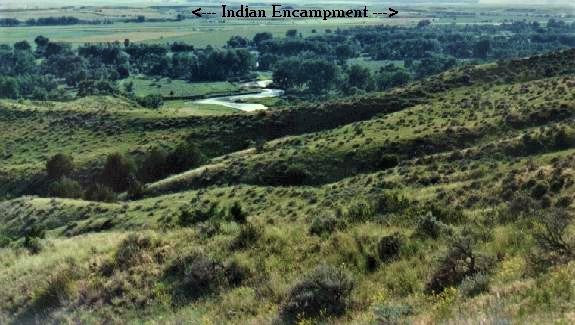Both his father and grandfather were leaders of the Minneconjou band of Northern Sioux. His mother was sister to the Hunkpapa Sioux medicine man Sitting Bull (above). White Crow had survived 19 fights, 10 against white soldiers. He had counted 7 coups, taken 2 scalps, killed 3 enemies, wounded another, rescued 6 wounded Sioux and under fire recovered a dead fellow Sioux warrior.
White Bull had captured 45 horses, 10 on a single raid, and twice willingly endured the tortures of the Sun Dance (above). He had been invited to join three warrior societies, choosing to become a Fox Warrior. 
Just a week earlier, at the Battle of the Rosebud (above) - 17 June, 1876 - he had fought man to man against a Shoshone , scouting for the white soldiers. After dismounting his opponent White Bull had "ridden him down" and counted coup again, leaving the man crippled with a sliced tendon in his right leg.
But today, White Bull was looking to convince the reluctant young southern Cheyenne woman named Monahseetah, to walk with him under the marriage blanket. So far she would only speak with White Bull in private through the buffalo hide of her family's lodge. Finally, " I...saw her carrying firewood up from the river....(Her son) was with her, so I just smiled and said nothing. I rode on to visit with my Cheyenne friend Roan Bear....We settled down to telling each other some of our brave deeds in the past."
The stories were interrupted when a man rode into the Cheyenne circle shouting an alarm. Soldiers were attacking the Sioux circle a mile to the south. White Bull jumped on his horse and rode to the camp of his uncle Sitting Bull. Seeing that his own family were all safely mounted on his pony herd, and that Sitting Bull had entered his lodge to make magic, White Bull rode off to defend the Sioux pony herd from the White Man's Indian scouts. 


.png)








No comments:
Post a Comment
Please share your reaction.